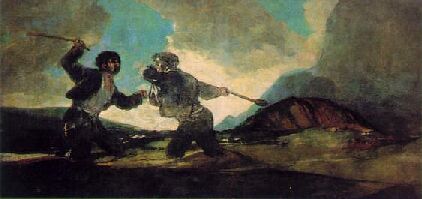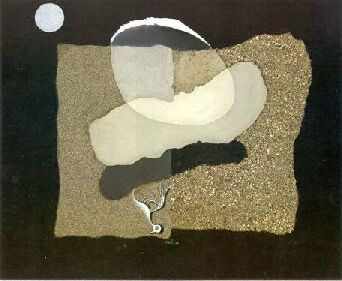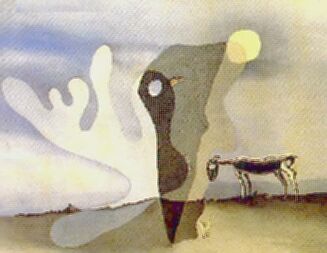
Goya, Francisco
Fight with Cudgels
1820-23
Oil on plaster transferred to canvas
4' 3/8" x 8' 8 3/4"
Prado, Madrid

Salvador Dalí (1904-1989)
Big Thumb, Beach, Moon and Decaying Bird (1928)
Dalí's "Transitional Period" lasted only one year, 1928. During this year, the young artist reacted against the traditional styles he learned in art school by experimenting with simple abstract forms and collage. Big Thumb is an example of this experimental work: it combines abstract forms with the different textures of sand and gravel. At the time he completed this work, Dalí was interested in forms suggesting more than one meaning. For example, the long gray shape in the center of the painting can be read as a toe, but it can also be read as a finger. Similarly, the large sphere around this object may look like a plate, but it could also be a moon. The sand and gravel taken from the beach near Dalí's home creates a sort of table top for these ambiguous objects. Dalí also experimented with the space of the painting by overlapping black and white colors, which makes the shapes appear to float off the surface of the painting. Dalí's interest in unsettling visions is already present in Big Thumb, where the predominant black and gray colors create an ominous feeling, reinforced by the sinister decaying bird at the bottom.
